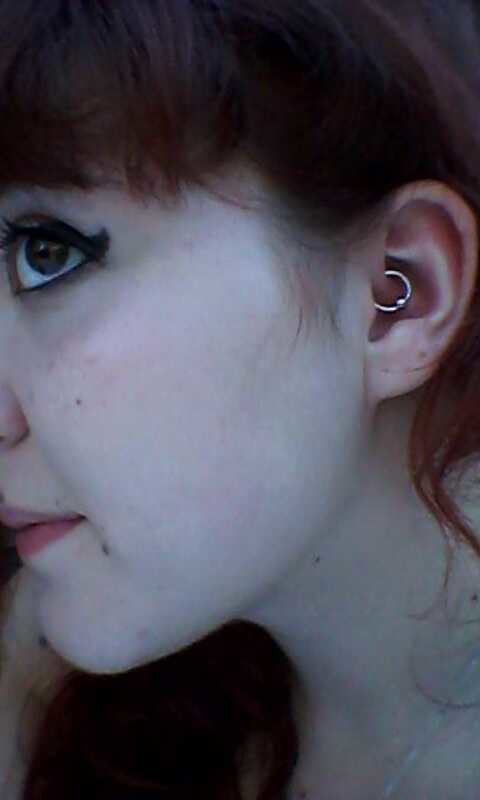Location Ear cartilage Healing 3-6 months | Jewelry Captive bead ring | |
 | ||
A Daith piercing is an ear piercing that passes through the ear's innermost cartilage fold, the crus of the helix. In most areas this piercing is pronounced "day-th" which can be compared to the word "faith", which is nonstandard. The standard pronunciation is "doth" like "goth".
The piercing is located in an 'awkward place' due to it being in a curvy place, and is usually pierced with a straight hollow needle. Curved barbells, BCR/CBR (ball closure ring/captive bead ring) and Hearts and moon for the Daith piercing are the most common jewelry to wear.
History
A client of Erik Dakota, who is said to have been studying Hebrew in college, first named this piercing "da'at" (meaning "knowledge"). Her reasoning was that the piercer must have been very "smart" to figure out how to do the piercing. This piercing was first brought into the public eye in Fakir Musafar's Body Play Magazine, in the same issue that also showcased the Industrial Piercing, the Apadydoe, and a large dermal punch in the outer conch.
Fakir Musafar added, "The Daith piercing was co-created in 1992 by Erik Dakota and a Jewish woman piercing client with a metaphysical bent. ... A true Daith must be done in such a way that the bottom part of the ring appears to come directly out of the ear canal. If one can see both the entrance and exit hole of the ring, it is not a true Daith. The technique for this piercing is quite advanced, requires a specifically curved needle and was devised by Erik Dakota. This technique is taught at Advanced Fakir Piercing Intensive."
